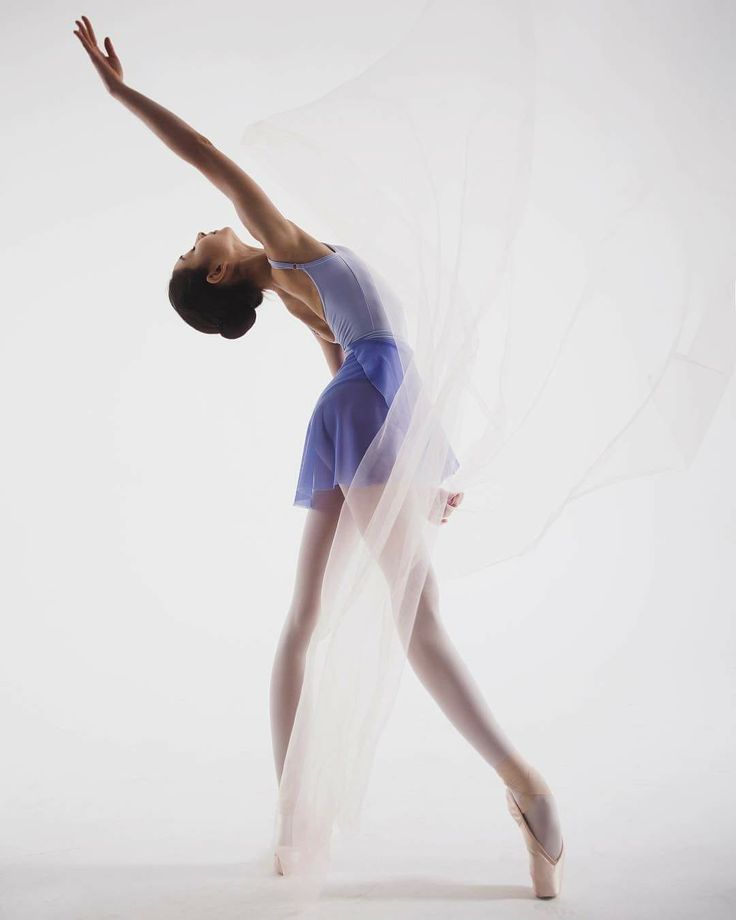How to do a tilt in dance
How to Do a Tilt in Dance: 13 Steps (with Pictures)
').appendTo("#quiz_small_affiliate_placeholder"),$('
').insertBefore( ".youmightalsolike"),$('
').insertBefore("#quiz_container"),$('
').insertBefore("#newsletter_block_main"),ha(!0),b=document.getElementsByClassName("scrolltomarker"),a=0;a
Explore this Article
1 Performing a Tilt
2 Improving your Flexibility and Balance
Questions & Answers
Video
Tips and Warnings
Related Articles
In dance, doing a "tilt" or a "leg tilt" usually means pulling a breathtaking move that involves performing a vertical standing split and tilting the upper body to the side while maintaining balance. This difficult move can be done with a partner or solo. Being able to perform an effortless tilt requires a dancer to have impeccable flexibility and balance along with a great sense of rhythm and musical timing. See Step 1 below to start learning how to do a tilt!
Steps
Method 1
-
1
Stretch before beginning. A tilt is an impressive feat of flexibility. It requires bending your body in a way that most people can't. As with any activity that requires intense bending or flexing, it's important to stretch beforehand to prevent injury. Focus on the types of stretches you would use before doing the splits - namely, hamstring, glute, groin, hip, and lower back stretches.
-
2
Enlist a partner that can hold your weight. When watching an experienced dancer perform an amazing, acrobatic tilt, it's easy to forget that this move requires lots of practice and preparation. Most dancers won't be able to perform a perfect tilt on their first try - generally, dancers should expect to fail many times before they can pull a perfect tilt on demand. Because of this, if you haven't performed a tilt before, you should minimize the risk of injury from losing balance and falling by getting a partner to help.
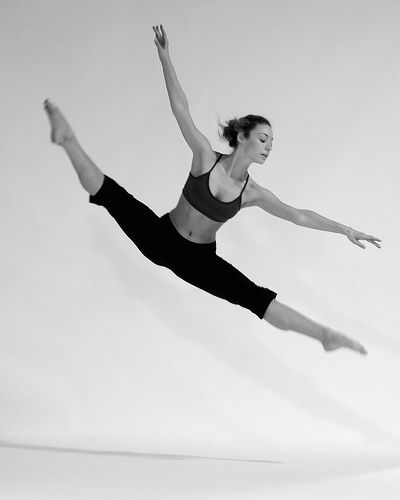 This partner should be patient, and, more importantly, strong enough to catch you if you fall.
This partner should be patient, and, more importantly, strong enough to catch you if you fall.Advertisement
-
3
Have your partner grab your upper waist from behind. Your partner should position him or herself behind you and put his or her hands just above your hips. From this position, s/he will be able to support your weight and help you keep balance as you make your tilt.
-
4
Lift one leg and shift your weight to the other. In a tilt, the dancer keeps one foot on the ground while raising the other as high as it can go. Keeping one foot squarely planted on the ground, lift your other while bending your knee until your thigh is roughly parallel to the ground. As you do so, make minute adjustments with your core muscles and your foot on the ground to maintain your balance.
-
5
Turn your foot on the ground outward. Keeping your other leg elevated, turn the toes of the foot touching the ground about ninety degrees outward - that is, your toes should face away from the center of your body.
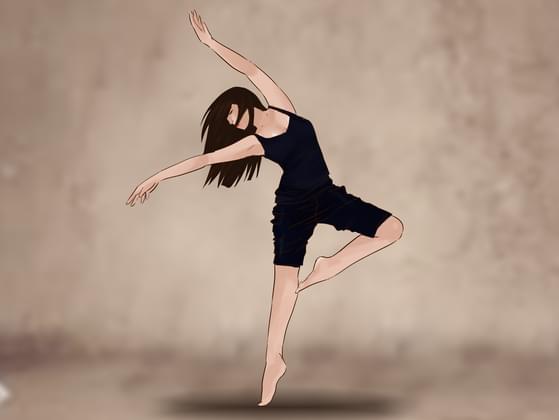 Turning your foot in this way makes it easier to perform the deep stretch involved in the tilt. Be careful to keep your balance as you perform this adjustment.
Turning your foot in this way makes it easier to perform the deep stretch involved in the tilt. Be careful to keep your balance as you perform this adjustment. -
6
Begin to lift your elevated leg as you lean. Carefully lift your elevated leg up as you lean your upper body in the opposite direction. Your bent leg should slowly raise and straighten above your hips - it may look like you're performing a very high karate kick. Have your partner support your raised leg with his or her hand on your calf. As you raise your leg, lean your upper body to the side until it is horizontal (or nearly so).
- Your partner can help you achieve a more vertical stretch by gently pulling your leg up, but be careful not to stretch your leg beyond its limits.
-
7
Bend upwards with your upper body. As you lift your leg, your upper body should naturally bend toward the raised leg at the waist. As your upper body approaches a horizontal position, this will eventually mean it is bending upwards.
 Your hips should raise with your leg and push out to the rear.
Your hips should raise with your leg and push out to the rear. -
8
Hold this position as long as possible. Once you can reach this "final" position, it's time to work on your ability to hold your tilt on your own. To start, have your partner slowly and gently let go of your thigh while you attempt to hold it in its place. Over time, work to gradually increase the amount of time you can hold your twist until you can maintain your position indefinitely.
-
9
Work towards tilting on your own. Finally, when you're confident performing the tilt with help from a partner, carefully begin to practice moving into and out of the tilt on your own. Doing so requires great balance and strong stabilizer muscles, so don't be surprised if you're unable to do your tilt the very first time you try. You may need to build significant core strength before you can tilt to your liking. A wall, pole, or even a sturdy piece of furniture can be helpful for supporting your weight as you work on your tilt.
 These things are somewhat less supportive than a careful partner, giving you an opportunity to gradually strengthen your ability to tilt.
These things are somewhat less supportive than a careful partner, giving you an opportunity to gradually strengthen your ability to tilt. -
10
As an alternate move, lift your leg as you face your partner. The "normal" tilt described above is similar to performing a side-to-side split, while this move is similar to performing a front-to-back split. Try raising your leg over and around your partner as you face him or her. From this position, you can rest your leg against your partner's shoulder or even use the opportunity to perform a stretch.
- Note that this variation requires even-greater flexibility in your hamstrings.
Advertisement
Method 2
-
1
Focus on hamstring stretches. As noted above, you'll want to stretch all of the muscles involved in performing the splits before attempting a tilt - glutes, groin, lower back, hips, etc. Most important of all are the hamstrings.
 The flexibility of these muscles directly dictates how straightly you'll be able to extend your leg and how far you'll be able to stretch it. Luckily, adding any number of a wide variety of hamstring stretches to your fitness routine can help you improve flexibility in your hamstrings.
The flexibility of these muscles directly dictates how straightly you'll be able to extend your leg and how far you'll be able to stretch it. Luckily, adding any number of a wide variety of hamstring stretches to your fitness routine can help you improve flexibility in your hamstrings. -
2
Perform balance exercises. When holding a tilt, you're balanced on one leg with the other in the air and your upper body jutting out to the side. This is not an easy position to hold for any length of time without falling over. Doing so requires great balance, especially in the form of strong core and "stabilizer" muscles. Try adding balance-strengthening exercises to your fitness routine. These exercises help improve both your natural sense of balance and the stabilizing muscles you use for the tiny posture adjustments that keep you upright while performing a tilt.
-
3
Strengthen your core. Finally, as in many other dance moves, a strong core is essential for performing tilts.
 Core muscles are vital for balancing and supporting your weight in awkward dance positions like the tilt. More importantly, a strong core can help prevent strain and injury, especially to the back, which can be debilitating for any type of athlete, dancers not excepted. So, be sure to incorporate plenty of core exercises into your fitness routine - crunches, planks, deadlifts, squats, and lunges, for starters.
Core muscles are vital for balancing and supporting your weight in awkward dance positions like the tilt. More importantly, a strong core can help prevent strain and injury, especially to the back, which can be debilitating for any type of athlete, dancers not excepted. So, be sure to incorporate plenty of core exercises into your fitness routine - crunches, planks, deadlifts, squats, and lunges, for starters.
Advertisement
Community Q&A
Search
Add New Question
-
Question
If I can't do a middle split, is it still possible to do a tilt?
Yes, but it won't be a full tilt.
-
Question
What if I don't have a partner to practice with?
You can use a wall or theraband instead of a partner.

-
Question
I'm actually asking for my daughter. She's a dancer, quite flexible, can do splits to both sides and straddle, but can't do a tilt. What is the main thing she needs to strengthen?
She mostly needs to strengthen her core. Her flexibility is great (I have been dancing for 8 years and I still don't have my straddle) but she needs a strong core to hold her legs up.
See more answers
Ask a Question
200 characters left
Include your email address to get a message when this question is answered.
Submit
Advertisement
-
A tilt requires A LOT of leg & hip flexibility, so stretch often to achieve in quicker.
As a small thank you, we’d like to offer you a $30 gift card (valid at GoNift.
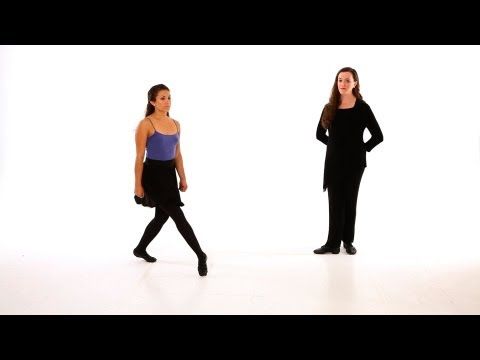 com). Use it to try out great new products and services nationwide without paying full price—wine, food delivery, clothing and more. Enjoy!
com). Use it to try out great new products and services nationwide without paying full price—wine, food delivery, clothing and more. Enjoy! Helpful 38 Not Helpful 1
-
Try this everyday for a month. You'll be bound to have it by then!
As a small thank you, we’d like to offer you a $30 gift card (valid at GoNift.com). Use it to try out great new products and services nationwide without paying full price—wine, food delivery, clothing and more. Enjoy!
Helpful 100 Not Helpful 14
-
Stretch before trying.
As a small thank you, we’d like to offer you a $30 gift card (valid at GoNift.com). Use it to try out great new products and services nationwide without paying full price—wine, food delivery, clothing and more. Enjoy!
Helpful 85 Not Helpful 17
Show More Tips
Submit
Thanks for submitting a tip for review!
Advertisement
Advertisement
About This Article
In other languages
How to Do a Tilt in Dance - Wiki How English
In dance, doing a "tilt" or a "leg tilt" usually means pulling a breathtaking move that involves performing a vertical standing split and tilting the upper body to the side while maintaining balance. This difficult move can be done with a partner or solo. Being able to perform an effortless tilt requires a dancer to have impeccable flexibility and balance along with a great sense of rhythm and musical timing. See Step 1 below to start learning how to do a tilt!
This difficult move can be done with a partner or solo. Being able to perform an effortless tilt requires a dancer to have impeccable flexibility and balance along with a great sense of rhythm and musical timing. See Step 1 below to start learning how to do a tilt!
Thanks to all authors for creating a page that has been read 118,955 times.
Reader Success Stories
-
Anonymous
Oct 2, 2016
"Mostly it was the step how to get into a tilt, or whatever the first step was called, that helped. Thanks! "
More reader stories Hide reader stories
Share your story
Advertisement
Policies & Tuition | Tilt Dance Company
The following classes are offered at TDC:
Ballet - Jazz - Tap - Hip Hop - Technique - Innovate - Cheernastics - Pom - Acrobatics - Clogging
Contemporary - Lyrical - Creative Movement - Technique & Tricks - Mini Gym - Improv
If you would like to see a certain class, please contact us!!!
We teach ages 2 and up!
Please come in or call for availability and schedule inquiries.
When you come in we will be able to find a class to suit your needs or we can get you added to a class waitlist.
Once we have 4 dancers on the waitlist, we will open another class!
Thank you for your support and patience!
Monthly Rates
1 hour week $75
2 hours week $135
3 hours week $185
4 hours week $215
5 hours week $255
6 hours week $300
**MONTHLY RATES INCLUDE YOUR RECITAL COSTUME & END OF SEASON PICTURES**
Monthly Rates for Twirlz & Toez
1 class per week $65
2 classes per week $95
**MONTHLY RATES INCLUDE YOUR RECITAL COSTUME & END OF SEASON PICTURES**
TDC Competition Dancers have a unique payment plan. These rates do not reflect that.
POLICIES
Tilt Dance Company (TDC) seasons runs from August to June. Summer sessions vary from year to year.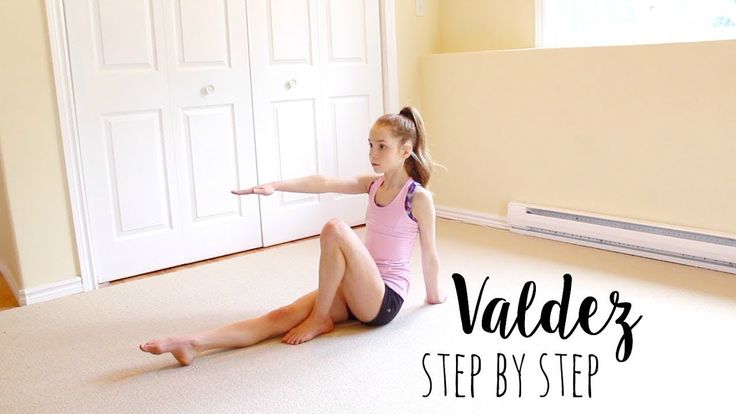 New students can enroll until Feb-March timeline. Starting then, we have to close enrollment so recital preparation can begin. Enrollment is on a first come, first served basis. To keep the quality of our company’s dance education top-notch, we do close classes once they reach a certain capacity. If a class is closed, students can sign up on a waiting list and they will be contacted when there is an opening. Early enrollment is encouraged. The season schedule is announced every June and enrollment begins the first Monday in July. There is a non-refundable, non-transferable yearly registration fee of $50 per season, per family.
New students can enroll until Feb-March timeline. Starting then, we have to close enrollment so recital preparation can begin. Enrollment is on a first come, first served basis. To keep the quality of our company’s dance education top-notch, we do close classes once they reach a certain capacity. If a class is closed, students can sign up on a waiting list and they will be contacted when there is an opening. Early enrollment is encouraged. The season schedule is announced every June and enrollment begins the first Monday in July. There is a non-refundable, non-transferable yearly registration fee of $50 per season, per family.
Tuition
Tuition is calculated based on a 10-month season (Aug-May) and divided into 10 monthly payments. The monthly classes vary depending on holidays, but this does not affect monthly tuition. Tuition is non-refundable but is transferrable on a case by case basis. Tuition is due on the 1st of each month. On the 5th of each month, it is considered late and your account will incur a $25 late fee. Tuition can be paid using cash, check or credit card. If a student’s account is not paid by the 10th of each month, the parent must come in and speak with the director in order for the student to continue to attend class. Any student whose account is 30 days past due, will not be permitted to take part in class until their account is in good standing. Any student whose account is more than 60 days past due, forfeits their place in class and will be required to pay all past due tuition and fees and then they can enroll as a new student, if there is a space in their desired class(s).
Tuition can be paid using cash, check or credit card. If a student’s account is not paid by the 10th of each month, the parent must come in and speak with the director in order for the student to continue to attend class. Any student whose account is 30 days past due, will not be permitted to take part in class until their account is in good standing. Any student whose account is more than 60 days past due, forfeits their place in class and will be required to pay all past due tuition and fees and then they can enroll as a new student, if there is a space in their desired class(s).
*Please ask us about setting your account up on Auto draft to avoid unnecessary fees.
NOTE: Tuition is never pro-rated as it includes your costume and end of season pictures. When you enroll you will be charged a costume and picture catch up fee for the months not attended.
Attendance
There are no refunds, adjustments or credits for missed classes; however, if a similar class is offered at another time the student can attend. Please call the front desk manager to arrange a make-up class. Dress rehearsals are ALWAYS MANDATORY. If a student cannot attend a dress rehearsal, please contact the director ASAP to avoid being removed from the performance.
Please call the front desk manager to arrange a make-up class. Dress rehearsals are ALWAYS MANDATORY. If a student cannot attend a dress rehearsal, please contact the director ASAP to avoid being removed from the performance.
Private Lessons
Private Lessons are scheduled and agreed upon based on the Innovator and the dancer/parent schedule. When an Innovator has to cancel they will reschedule at another time around the dancers/parent schedule. If the dancer has to reschedule, the Innovator must be notified as soon as possible so a makeup lesson can be planned. If the private lesson is missed/no-show, the missed lesson will not be made up nor refunded. Make every attempt to notify the studio in advance of your dancer missing a private lesson.
Closings
Tilt Dance Company will follow Yukon/Mustang School’s calendar. Please check our Facebook, Instagram and website for closings. If the school district closes for weather, we will most likely close.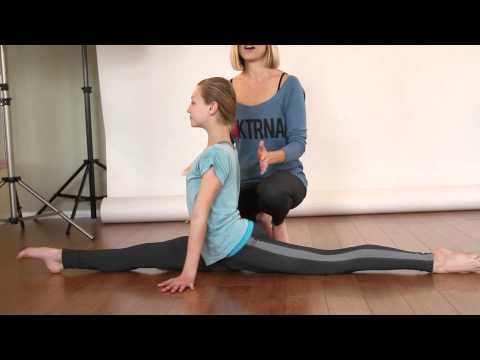 However, we will announce no later than 1pm if we are closed. There will be no makeup classes for weather related closings.
However, we will announce no later than 1pm if we are closed. There will be no makeup classes for weather related closings.
In the event of unforeseen circumstances, emergencies, or government mandated shutdowns there will be no refunds provided for missed classes. If these shutdowns last for longer than two consecutive weeks we will then provide makeup classes. Due to the nature of the closure or shutdown these make-up classes may be provided via an online platform.
Dress Code
Proper dance attire specific to the student’s class is required. This is for many reasons: to allow movement, to prevent injury and so faculty can provide appropriate instruction/correction when needed.
All hair must be pulled back and secured out of the students face.
Jewelry is not permitted, only stud earrings are allowed.
Jeans and street shoes are not allowed.
Specific Class Attire
Ballet: Leotard, Ballet Tights, Pink Ballet Shoes.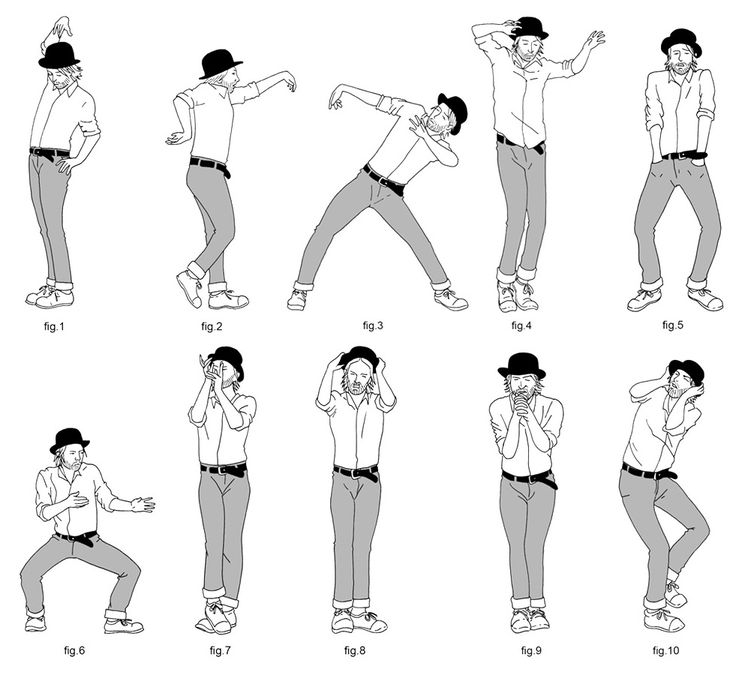
Jazz: Solid Color Leo or fitted top, Tan tights, Tan pull on jazz shoes. Jazz pants and shorts are optional
Hip Hop: Solid Color Leo or fitted top, Tan tights, tennis shoes/combat boots are allowed as long as they are a smooth/no marking sole. Outside shoes are not permitted on TDC Dance Floors. Hip hop shoes for TDC Hip Hop classes are all white reebok classics. They can be found online in youth and adult sizes. Also there is a Reebok Store at the OKC outlet mall and they also have them and they are cheaper than they usually are online. Make sure you get the all white with the white sole (not the gum sole) Jazz pants and shorts are optional
Tap: Solid Color Leo or fitted top, Tan tights, Black lace up tap. Jazz pants and shorts are optional
Twirlz & Toez: Ballet: Leotard, Ballet Tights, Pink Ballet Shoes Tap: Leo, tights, Black Buckle Tap Shoes. Skirts and shorts are optional and other leos and tights can be worn.
*Students will be sent out of class if they are not in proper dance attire with correct shoes and their hair is not properly secured out of their face.
Extra Attire
TDC will have gear available for purchase. On occasion a shirt may be mandatory for a performance etc. This will be communicated in advance if an event arises. However, TDC gear will be ordered on a quarterly basis and can be ordered at the front desk at any time.
Costumes
Every class will perform at some point and will need a costume. Costume fees are included in your monthly tuition. This fee only includes the costume. Tights, accessories and/or shoes are an additional cost. We try our very best to pick out and order costumes that have everything included except tights and shoes. Costume fees are non-refundable and non-transferrable. Additionally, dancers are not permitted to take their costume home unless their account is in good standing.
Performances
Occasionally TDC will have public performances. Generally these performances include our Pre-Professional dancers. On some occasions we may ask a company class to perform. When this happens, there will be sufficient notice.
When this happens, there will be sufficient notice.
Recitals
TDC has one recital per year. Generally it is in late May, early June. This date is set in advance and based on venue availability. Recital Fee is $50 per dancer and includes a recital T-shirt. The Recital fee is non-refundable and not transferrable. Tickets can be purchased if the dancers account is in good standing.
Facility Rules
TDC takes pride in their facility and we hope that every person that enters will respect and take responsibility while in the space. TDC is a closed classroom facility. Under no circumstances should there be any visitors in the classrooms while class is being conducted. Absolutely no gum, candy, food or drinks are allowed in any of the dance rooms at any time. In addition dancers may not bring the following into their classes: jewelry, bags, and/or cell phones. There is a space for belongings to be labeled and stored, please utilize it. Parents please watch your children and do not allow them to play in any open dance rooms.
If your information changes at any time, please update with the front desk.
Respect your instructors, staff, and fellow students.
Everyone please take responsibility for the energy you bring into TDC every day. The TDC directors, Shelby McClure or Stephanie Simon will ask you to remove yourself from the premise if you are spoiling the learning experience of any student. In this technological age we understand, respect and love that our students and parents are active on social media. Please tag us, share our posts and feel free to brag about your child. However, understand that negativity about Tilt, Innovators, Tilt dancers and/or other studios and their faculty and dancers will not be tolerated. Poor sportsmanship is unacceptable and you will be contacted privately by one of our directors if we feel necessary and could be dismissed from Tilt Dance Co.
We want to offer the best possible experience in class and out of class for everyone, please respect that.
Master Classes
Master classes will be offered at TDC. When these are scheduled, there will be sufficient notice and attendance will range in cost of $20-30 per student.
Kids Night Out
KNO is offered from time to time at TDC and anyone enrolled can attend and bring friends/and/or siblings.
The criteria are:
-
Must at least be 5 years of age to attend
-
We must have at least 6 students attending to hold the night out
-
Drop off is at 545-6pm
-
Pick up begins promptly at 10pm.
-
If the child is not picked up by 10:15pm, we will charge $5 for every 5 minutes past 10:15pm.
Liability
Upon enrollment, all students, guests, and participants of TDC understand the type of event and activity offered. All participants agree to comply with policies and safety regulations contained herein. Tilt Dance Company, the staff and/or faculty are not liable for personal injury or loss and/or damage to personal property of any participant, guest and/or student.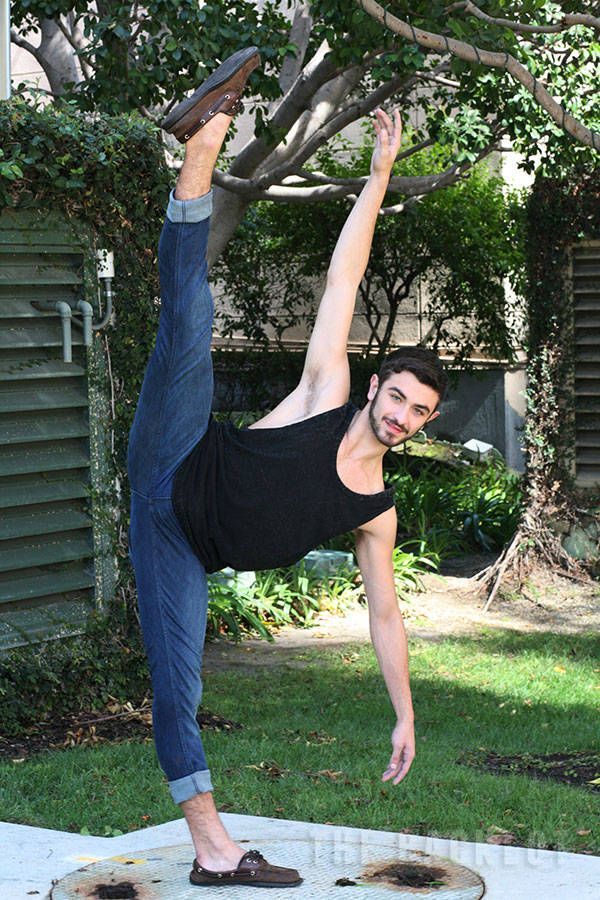 Students and/or their legal guardians retain the right to decline participation in any activity. Please inform TDC staff and/or faculty of any physical limitations or disabilities and consult a physician before participating in any activity at Tilt Dance Company. TDC cannot dispense medication of any kind, including Tylenol or any OTC medication.
Students and/or their legal guardians retain the right to decline participation in any activity. Please inform TDC staff and/or faculty of any physical limitations or disabilities and consult a physician before participating in any activity at Tilt Dance Company. TDC cannot dispense medication of any kind, including Tylenol or any OTC medication.
Notes
Tilt Dance Company reserves the right to refuse service and/or admission to any individual. Arguing with instructors, peers, bad-mouthing or lack of respect for the dance company, its members, staff/faculty or the facility is not tolerated and will result in immediate dismissal without refund.
All schedules may change due to enrollment and availability of faculty. Anytime there is a schedule change a TDC representative will contact any and all people involved to communicate the cancellation, rescheduling or combining of classes and rehearsals.
TDC makes every effort to maintain our master calendar on a daily basis.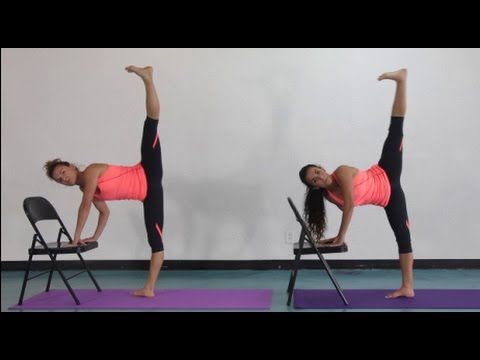 There are times things may have to be rescheduled. We do our very best to communicate this to our students and parents as soon as we know. Please note we try to announce our master schedule every June/July.
There are times things may have to be rescheduled. We do our very best to communicate this to our students and parents as soon as we know. Please note we try to announce our master schedule every June/July.
TDC staff and faculty strive to provide our students with a joyful dance experience through quality education, training and a healthy atmosphere every day. We want you to feel comfortable and to be a part of our dance family. Please touch base with the front desk with any concerns/issues/comment. If you feel the front desk did not adequately address your issue/concern/comment, the TDC Directors, Shelby McClure and Stephanie Simon are open and willing to meet with you and your student(s). Please note they are also teachers and will not be available to discuss issues in between classes. Please make an appointment via the front desk. Making an appointment is the best way to touch base with either of them and receive the personalized attention you and your student(s) deserve.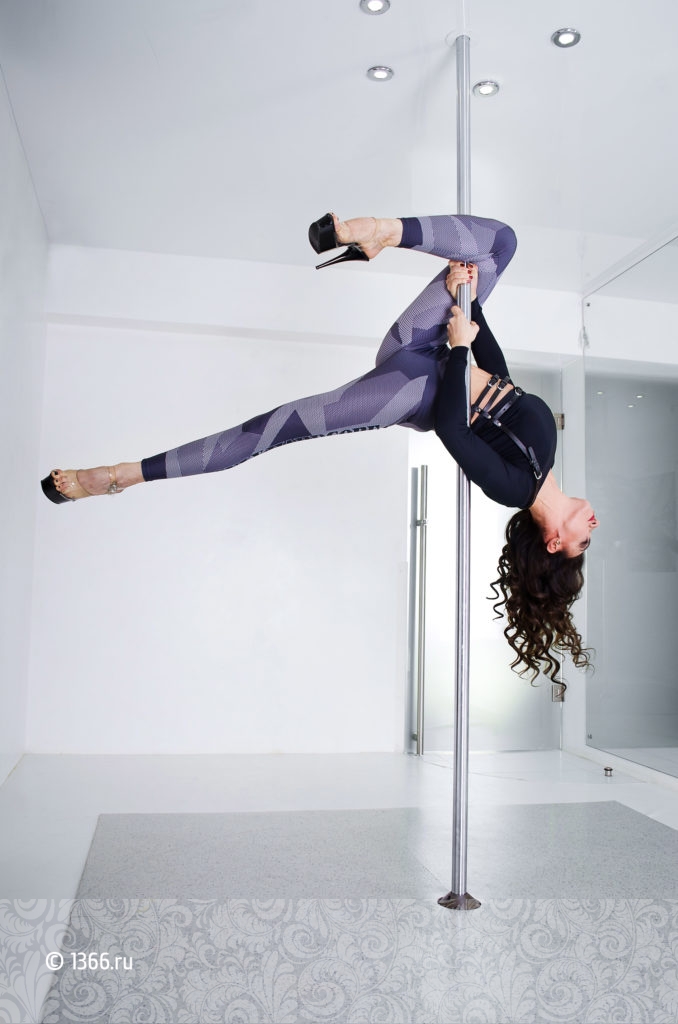
Thank you for choosing to be a part of the TDC Dance Family!
Ambiguous dance moves: zoukability — LiveJournal
Love 'em or Hate 'em: 6 Polarizing Dance MovesAuthor: Laura Riva
Original: http://www.danceplace.com/grapevine/love-em-or- hate-em-6-polarizing-dance-moves/
Italics: translator's notes ;)
The original article is certainly helpful, but the advice in it seems to me quite obvious to a more or less experienced partner. Therefore, I supplemented it with my extended comments.
In any pair dance there are several movements that inevitably divide the partners into two groups: some love these movements, while others hate them. So what should a partner do? How can you tell if you've got a partner who loves cambrai or one who wants you to never, never, NEVER do it? What signs indicate a lover of rotations or their opponent?
What are these couple dance moves that girls either love very much or hate deeply?
1.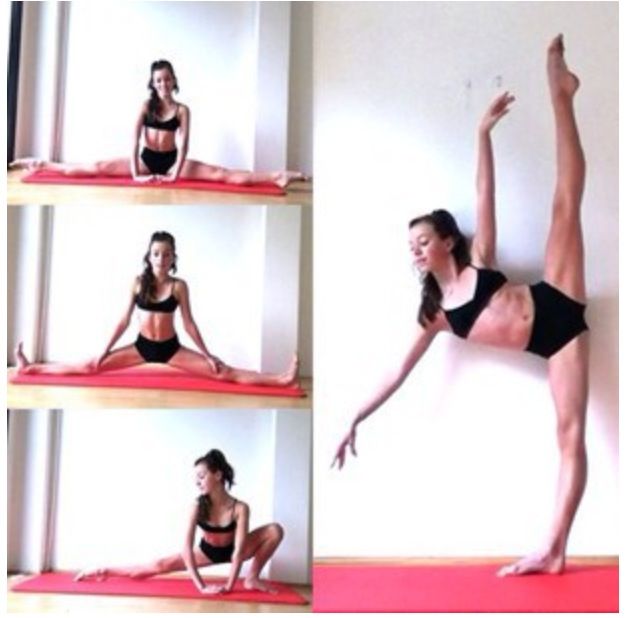 Cambrai
Cambrai
Some partners love them - fast, deep, many times in a row. Others feel a looming fear as soon as they are led to prepare for Cambrai.
Cambrai is a beautiful and controversial dance move. Cambrai is very scary for girls who are afraid of injury, as well as for those who have already had a negative experience. Especially frightening fast, deep or sudden Cambrai.
If you are a cambray partner, start slowly. See how your partner responds to gentle preparation and gentle tilt. If she answers well, try to go deeper. If she still answers well, and you have control and technique, you can lead to a faster cambra.
However, you must be careful and immediately stop the cambrai if the lady...
- says she doesn't want to do the cambrai
- grabs your shoulders
- is not being led
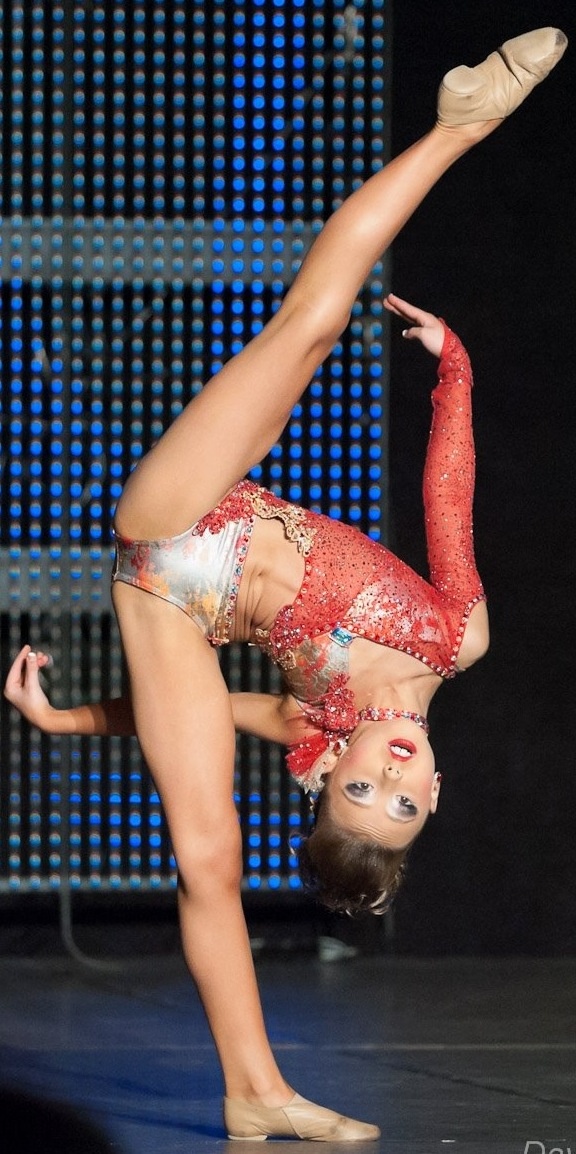 The "maximum" opportunity is when the partner stops bending over. This is the point where the partner goes from "that's cool" to "no way."
The "maximum" opportunity is when the partner stops bending over. This is the point where the partner goes from "that's cool" to "no way." There may be many reasons for a lady not to do a cambrai: fear, injury, lack of confidence in technique or surroundings, the quality of your lead or connection. If she "doesn't go" further or doesn't do it at all - respect her abilities and don't try to force her to do it.
2. Lots and lots of spins
Oh, spins are my old favorite. Many partners, like me, love multiple spins (correctly executed).
But there is another side - those who get dizzy or who just don't like to spin a lot. And sometimes a bad floor makes even fans of rotations suffer.
You have gone too far if you...
- feel that the partner is resting on the dribble
- notice that she is losing balance
- see that her smile has disappeared
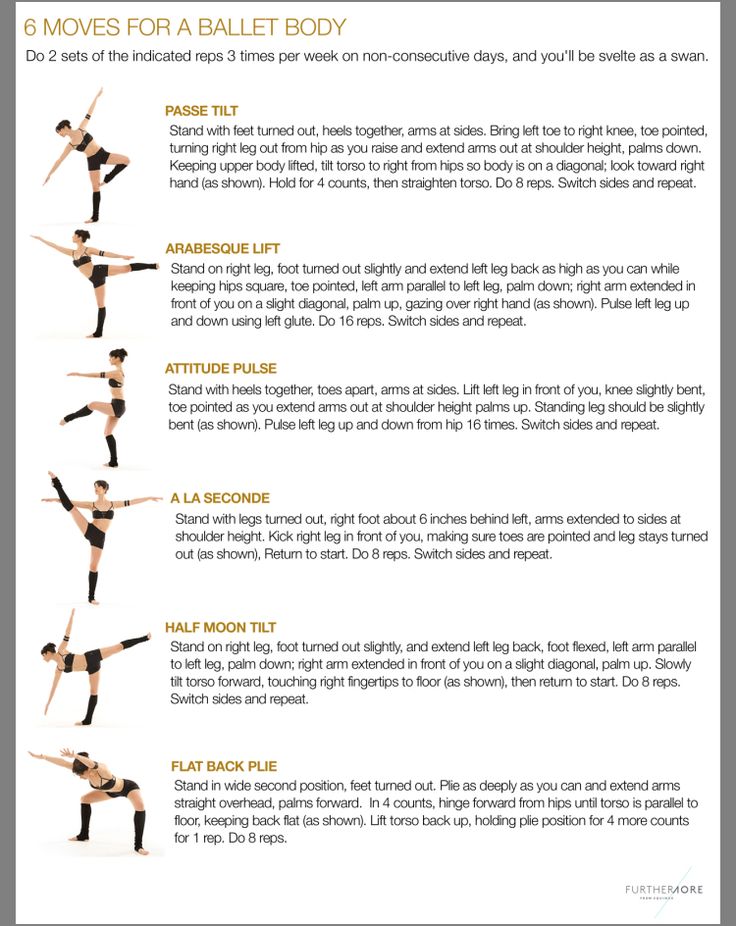
When in doubt, use the normal amount of rotation in a dance: no more than one sequence of rotations in a row in a relatively short amount of time. A fan of spins will not mind if there are not so many of them, but their opponent will be very outraged if there are more of them.
Be especially careful with spins with a tilted frame or with an offset axis - the partner may not be able to do them correctly and come out of them competently. This is a complex coordinating movement. Who does not believe - forward to rotate in an inclination of 10 revolutions in each direction! And yet, many partners do not know how to properly lead to this and disstabilize the partner themselves.
3. Lifts
Any movement in which you support your partner's weight while her feet are on the floor is a lift. Combinations of supports and cambrai can be very good, but it all depends on how much weight of the partner you take on.
If you are a strong, reliable partner, some partners may like to support you. And others - no.
And others - no.
If you lead to support and the lady doesn't go down, it means that she doesn't like the move, or the way/where you do it doesn't seem safe to her. If the partner's smile disappears at the exit of the movement, this also means that she does not like supports. If this happens, don't do it again. A good dance does not require supports.
Lifts require good technique and can be dangerous. If you love supports, it's important to start simple, slowly, and only with the right partners. No matter how much a novice partner loves supports, you can't do them with her. The partner may be injured - and she will blame you for this.
You also need to be sure that if something goes wrong, you have enough physical strength to safely pull your partner out of the movement.
A partner can love support and at the same time be completely unable to do it. For example, she may not know that in some lifts she must hold the press, hold a rigid frame, she may not understand her zone of control and responsibility in movement.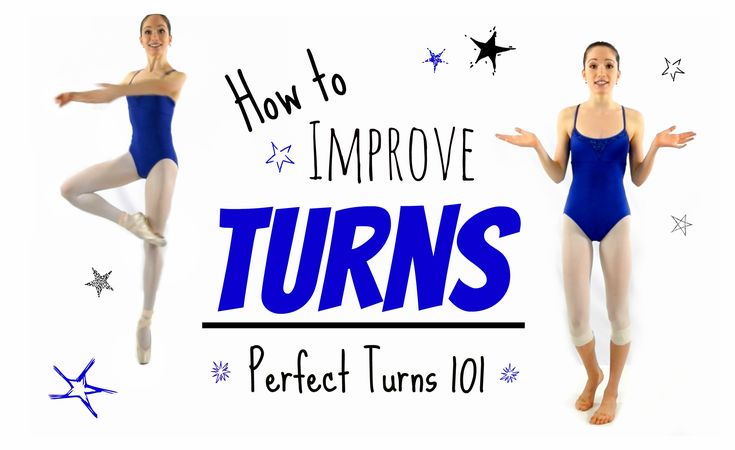 Both of you could get hurt.
Both of you could get hurt.
I would also like to highlight here counterbalances . because the principle is similar. Recently, counterbalances have become very fashionable, partners insert them here and there, completely not focusing on their technique of execution and the level of the girl, and many girls sin by suddenly jumping into counterbalances themselves. For which, however, they themselves rake, because. not always the partner has time to react.
Stop. There is a lead on the counterbalance! A lead that allows you to clearly understand whether this is a counterbalance or something else. The partner must first be put on the half-fingers, lift her frame and only then lead to the counterbalance. The girl understands, prepares and then gives you her weight at the right time. If you don't do this, then you don't know how to counterbalance. Throwing a girl into counterbalance immediately without preparation is a gross mistake. If the partner does not understand, does not give you her weight when you asked, then you do not need to lead her by force or say: "This is a counterbalance, baby, give me the weight!"
4. Very sensual moves
Very sensual moves
With the rise of zouk, sensual bachata and kizomba, many dancers have come to love this very sensual trend. But some are absolutely not. For them, it feels like harassment.
Sensuality should be mutual on both sides. This includes such manifestations as taking the partner's hand and running it over your chest or a sweaty, too close hug.
I personally hate it when my hand is run over my chest and any variations when my hand needs to touch something. I feel like I'm in a strip club. (Totally agree, it's disgusting. Sometimes they even try to run my hand over their hair or face).
If your partner's body becomes rigid or immobile when you do something sensual, then she does not like it. Never drag your partner into a close hug. You open your arms and invite the girl, and she herself comes as close as she feels comfortable.
If your partner does not reciprocate a close hug, then she does not want it. The same applies to head-to-head contact: if you notice that a girl is trying to avoid head-to-head contact and moves away, STOP! She doesn't want this!
And vice versa, if the partner responds to the invitation to close contact, then most likely she likes everything.
Manual from Bruno Gallardo:
"Enter as if you are going to kiss the girl for the first time, but are not yet sure of her readiness. Reduce the distance, but not to zero, but by 80-90 percent. If the girl wants - the rest she will make a move towards you. If not, a slight backward movement will tell you that this time is not."
5. Athletic Movements
I have a friend who is very fit and loves all kinds of physically challenging movements. But at the same time, she is pinned by the most difficult fitness workouts and crazy tricks on the pole.
When partners make physically difficult movements with her on the dance floor, she is happy. She likes fizuha, it turns her on.
On the contrary, many people do not like this kind of movement. If anyone else likes them at all.
If a person dances at his physical limit, then trying to take him beyond the limits is useless and this can cause injury. Well, many simply do not want a dance that looks like physical education, they want a soft, neat connection.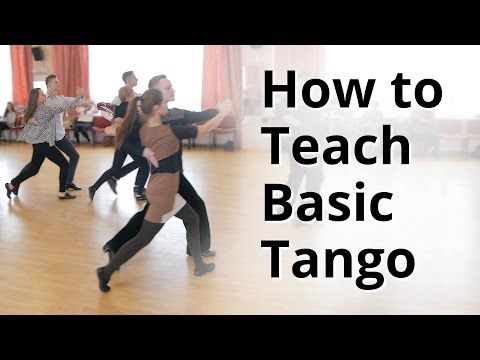
One can easily determine which category a partner falls into by how she reacts to complex movements. If she does not complete the movement, interrupts it, or looks tense during the movement, she clearly does not like what is happening. Reduce the level of physical activity in the dance.
Often the partner can still lose connection if you put too much energy into the dance. You may notice that they slow down or slip out of your hands.
And those who like it harder will enjoy the dance, move comfortably and enjoy the moment with you.
What are physically complex movements?
First, you need to consider the level of the partner. If she is a beginner or intermediate, then Cambrai can be difficult for her. Deep cambrai or too harsh. Off-axis rotations, etc. If the partner has been dancing confidently and for a long time, then the complexity is added by the speed and sharpness of any movements.
Physically complex movements that need to be trained for a long time and have good physical training for them: rotations in plie on one leg, acrobatics in the air, deep cambra, where you need to keep yourself well with the abs and buttocks.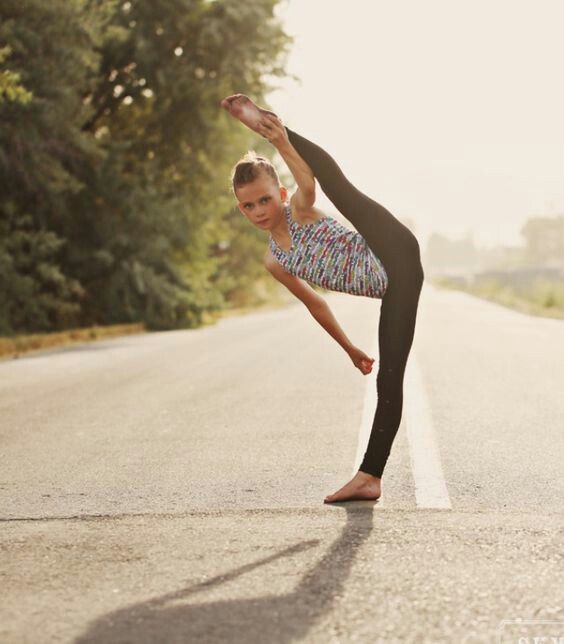
Any acrobatics where you lift a partner into the air is inappropriate: 1. without proper training both dancers; 2. at a party.
Acrobatics requires knowledge of safety and performance rules from both! But for some reason, there is always a category of self-confident partners who believe that if they know how to do support, but the girl does not, then this is normal, nothing is required of her there. This is a stupid and dangerous delusion. There are especially many such partners in the hustle...
Acrobatics is mainly used in the show, after careful training, and on an empty dance floor where you will definitely not hit anyone. A social party is a bad place to perform acrobatics, the risk of injuring the partner and the people around is too great. And we are still not very good at looking around.
6. Optional: endurance test
This is not a specific movement, but rather a general manner of dancing.
Some partners enjoy a complex dance that tests their technique from start to finish.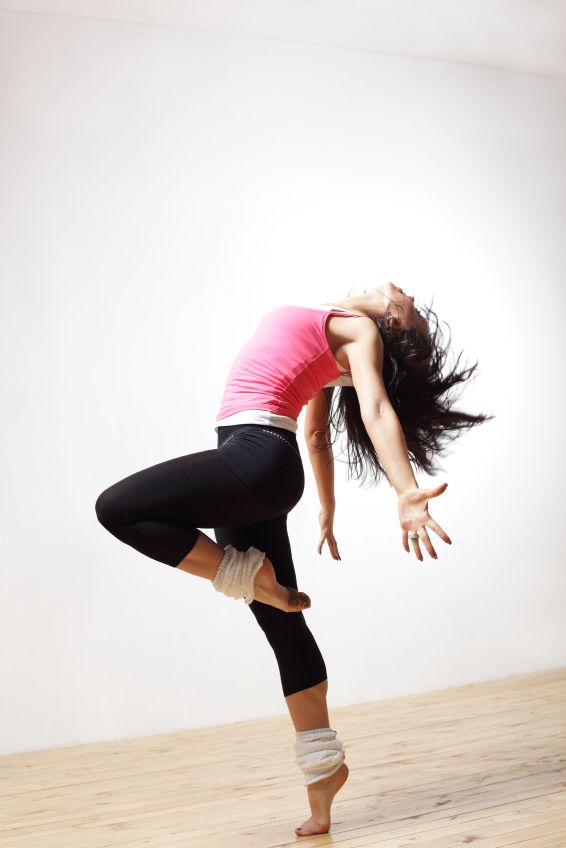 However, these are in the minority.
However, these are in the minority.
Most girls enjoy a well-balanced dance that doesn't wear them out. There must be room for relaxation, musicality and some play in the dance.
If you feel your partner is lagging behind, making a harder connection, or breathing heavily, slow down. Give her a break and change her set of movements. It will most likely make her happier.
An endurance test is to take the movements from points 1, 2, 3 and 5 and fill the entire dance with them, without pauses.
Pinball partner - related article.
For those who are unsure
If you are a partner and have difficulty reading body language, there are several "safe" options for you. First, you can ask ahead of time about things like cambra and supports. This will give you an open answer about whether your partner likes what you are doing or not.
Second, be careful. If you are not sure what their reaction means, if they do not like something, do not make this movement. It certainly won't hurt anyone. Or, if you need confirmation, try again to do this thing, but more carefully and more slowly.
It certainly won't hurt anyone. Or, if you need confirmation, try again to do this thing, but more carefully and more slowly.
If after two attempts you are still unsure, I would refrain from trying again until you know for sure whether your partner likes it or not.
There are a few more things that a partner should not do in the dance:
- You should not force your partner into a deep plie to the floor. Not all girls have healthy knees, and not all physical training makes it easy to do this.
- I would not advise to lead a partner in cambra to the floor or too much on the back leg for the same reason: there can be a strong load on the knees, well, just not everyone has enough physical strength to do it easily and get up.
- Don't touch your partner's face! Never and never!!! Only a few do it, but it always infuriates! Not only my opinion. Firstly, the face is, as it were, intimate, you should not touch it without the permission of your partner.
 Secondly, it is unhygienic, some people get acne after that.
Secondly, it is unhygienic, some people get acne after that.
Polish your technique and be sensitive to each other!
____________________________________________
Announcements of all new articles in group Zoukability
Headwork technique: zoukability — LiveJournal
Author: Murasheva Nadezhda"Zuk? Is this a dance where the hair is flying?". This is sometimes heard from people who are not familiar with the sound. Indeed, the first external impression of the dance is the partner's plasticine body and flying hair. And today we will talk about them - about headworks.
"Headwork" - translated from English literally "head work". In foreign classes, the term "head movement" is sometimes still used.
The first impression of the movements and the very word "headworks" give many people a fundamentally wrong, dangerous delusion that you need to actively move your head a lot in zooking. Many novice partners are eager to learn how to swing their hair effectively and often insert this movement on their own to decorate the dance. But they don't realize that they scare both beginners and older partners, and most of all - experienced teachers.
Many novice partners are eager to learn how to swing their hair effectively and often insert this movement on their own to decorate the dance. But they don't realize that they scare both beginners and older partners, and most of all - experienced teachers.
Everything is not what it seems at first glance! And the task of a normal teacher is to dispel the myths about headworks in time, explain the safety rules, the technique of execution and gradually prepare the dancers for the correct and safe execution of these spectacular movements. If this is not done in time, then the girls run the risk of getting into trouble on their necks and then it will be oh so difficult to retrain.
In addition to the banal stretching of muscles and ligaments, improper headwork technique is fraught with pinched nerves, displaced spinal discs and the development of an intervertebral hernia, which can completely deprive you of the opportunity to dance and move comfortably in the future.
So what do you need to know about headworks?
1. Headwork is a passive movement
Headwork is a passive movement
We never deliberately wave our hair. NEVER!!! Hair fly simply by inertia following the movements of our body. The right technique in the body - and the hair will fly. In general, forget that something needs to be done with the hair. Focus on the steps, body work and connection with a partner, and then you will have everything.
We don't wave our heads to push our hair out of our faces. To make the hair fly back, it is enough to straighten up in the body. The neck at this point remains in a normal neutral position. Each head toss brings you one step closer to the traumatologist's office.
2. Headwork is an echo of the movement that occurs in the chest
While performing headworks, we do not move the neck due to the tension of the neck muscles. The center of movement is not the neck, not the shoulders, but the thoracic spine . In it, there is a sideways tilt, deflection, rotation in a circle ... Following the movement of the thoracic region, the top passively moves.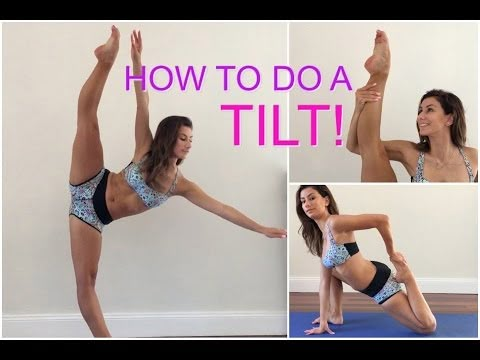 And only so.
And only so.
To better understand this principle of movement, imagine that you are holding the handle of a long gymnastic ribbon. The movements of the handle are the only semantic center that sets the movements of the entire tape. The spectacular movements of the tape itself only continue by inertia how the handle moves. The same with headworks. The head and neck passively continue to move, having a center in the thoracic region.
3. The head and neck are an extension of the spine
The neck is the uppermost and most fragile part of the spine, and the head is just a "vertebra with eyes". In all movements that we perform, the line of the neck should be a logical, not broken continuation of the line of the spine. The line can be in the form of a smooth arc, there should be no kinks, as if the chicken's neck was twisted.
And, according to this rule, the head should not hang down completely limply, because then the line of the neck will no longer be a smooth continuation of the spine, it will turn out to be a "kink".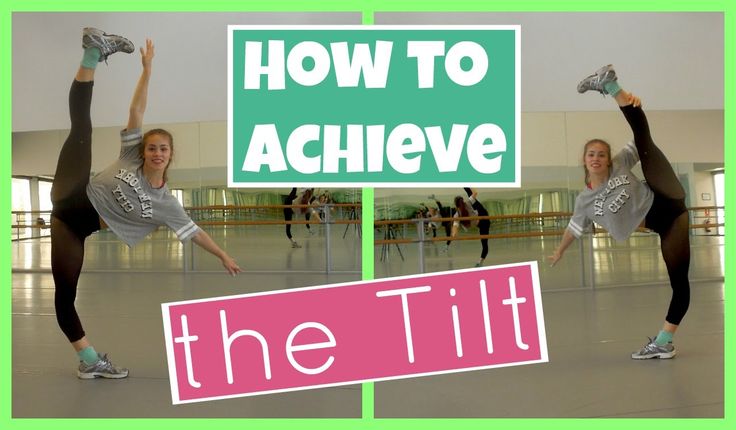 Well, the main reason is that a completely relaxed neck with a drooping head is easier to injure with a careless movement.
Well, the main reason is that a completely relaxed neck with a drooping head is easier to injure with a careless movement.
I would call the correct neck condition on headworks "soft tone". This means that you do not make any active movements with the muscles of the neck, but at the same time there is a slight tone that does not allow the neck to hang completely like ... withered dandelion.
4. Headwork is carried out at a single moment in only one plane
Remember any warm-up. We can say yes with our head, we can say no, and we can shake our head to one shoulder and the other. So, if you tilt your head sideways to the shoulder (not in a circle), then you can’t take the crown back behind the shoulder line. Why? Because it's the easiest way to dislocate or break your neck. By the way, this is a combat technique. Let’s suppose that you won’t break your own neck in a zouk, but you can seriously damage it, especially if your partner jerks you sharply at that moment.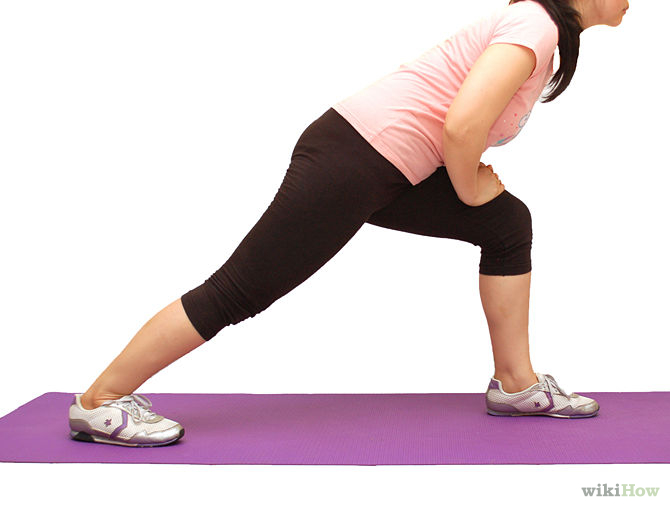
5. Head never tilted back (both actively and passively).
When the head moves backward, this movement is mostly due to the deflection under the shoulder blades. In the position with the head tilted back, we hold the head with the muscles of the neck, do not let it hang limply back. Especially on Cambrai!
Why is that? In a relaxed tilted position, the cervical vertebrae and muscles are most vulnerable to sudden traumatic movements. If a partner pulls you somewhere at this moment, it can be very unpleasant. If you release your relaxed neck on the cambra at the bottom, it is dangerous because the next moment your partner can sharply lift you up like a whip, and your neck will not be ready for this.
Watch the video. Are you familiar with such a movement in dance, does your neck often do it? ;) Be more attentive to yourself, train your technique - it's not just nitpicking, it's really important!
It is necessary to make a reservation here that in the lambazooka there is a characteristic whip movement when the girl effectively throws her head back. Many people think that A) It is normal, beautiful and safe; B) This movement can be used as styling on its own.
Many people think that A) It is normal, beautiful and safe; B) This movement can be used as styling on its own.
Neither is true.
There really is such a movement, but, firstly, with the correct execution technique, the hair throw is carried out due to the deflection under the shoulder blades (!!!), and the neck remains in its normal physiological position (few people do it technically correctly). This is similar to the mini cambrai, which is performed only with the top of the body. If you're doing the whip correctly, your chest should be pointing up at the ceiling, not your chin.
Secondly, there is a clear, concrete lead on the whip. If a girl inserts a whip herself a lot to decorate the dance, then it becomes a weedy movement that interferes with connection with a partner, and also prevents learning more subtly feel lead . Be able to distinguish between the difference in dribble just on a flat rise from a lean and on a whip/cambrah.
6. Headworks are optional
In no case is a partner obliged to do headworks if she doesn't like it, it's scary, uncomfortable, she doesn't know how, her head is spinning. .. For any of the reasons.
.. For any of the reasons.
Rules for headworks
1. We don't do headworks with a partner who doesn't know how to do them or doesn't want to. You can't force a headwork to be done.
2. We try not to do headworks with a partner who does them, but it's wrong. - Why the girl once again to injure?
3. When leading to headworks, we don't touch the partner's head. This rule may seem obvious, but about once a year I come across a unique person who tries to lead me to headworks by putting his hand on the top of my head...
4. Don't touch the neck either. The exception here is only a very soft touch on the neck, without pressure on it - in a number of movements like the soulzouk, when you clearly imagine what and how you want to do it.
5. At headworks, we avoid sudden movements, jerks.
6. Avoid splitting the partner's head back and forth on the cambra (I wrote above about the whiplash injury of the neck).
6. When acting through the partner's frame, we also use our own frame. (No need to "cook borscht" with your hands).
(No need to "cook borscht" with your hands).
Leading methods for headworks
1. Leading through the frame - BASIC
Head movements are controlled by action on the chest. The chest tilts to the left - and the head tilts to the left.
The partner by tilting his frame tilts the partner's frame. From this, she bends in the chest, and the head continues this tilt.
The point of contact here can be the palm, and forearm, and biceps, and partner's shoulder blade.
In order for the partner to lower her head to the side, it may be enough just to raise her hand to the side (the tilt of the head is due to a slight tilt in the chest). But this movement is optional, the partner may not always react like this to raising her hand, but only if she wants it;)
2. Lead by the body
Man's hand directly tilts one shoulder of the lady to the side and rolls over the back to the other shoulder. This also includes leading through a soft touch on the neck (those who have not studied this movement in the lesson do not do it!)
not all girls are sensitive enough to the connection and their body to feel it.







